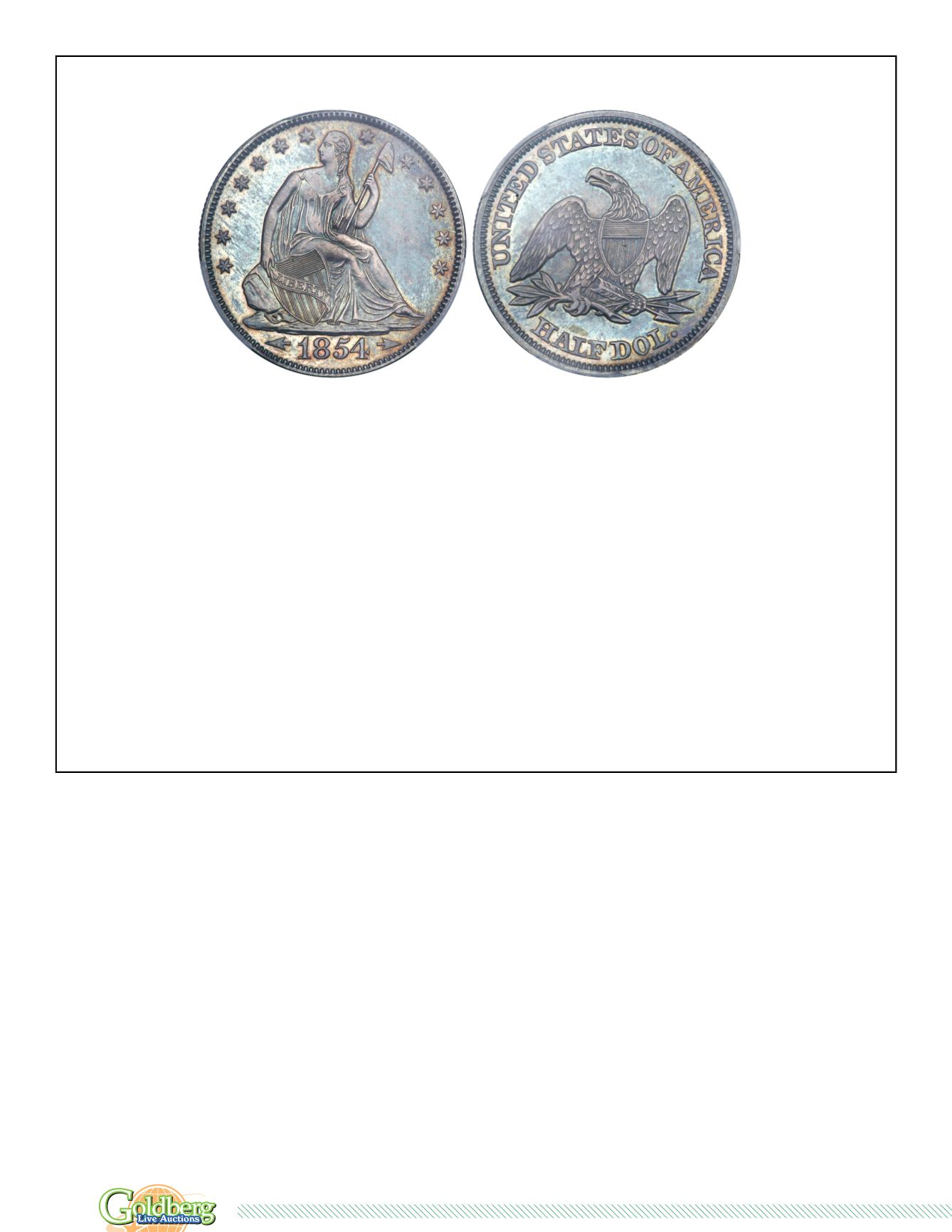
118
|
Half Dollars
L
OVELY
P
ROOF
1854 A
RROWS
L
IBERTY
S
EATED
H
ALF
D
OLLAR
Enlargement
767
1854. Arrows
.
PCGS graded Proof 64.
CAC Approved
. Lovely toning on both sides. An extremely pleasing example of the Proof 1854
Arrows Half Dollar, much rarer than the Proof dollar of this date. There are probably about 20 surviving Proof Halves of this year and this is
one of the choicest currently available.
This coin shows all the diagnostics for a Proof striking including the high date with the 54 practically touching, extra outlines on some of the
stars, and unsupported toe of Liberty.
Proofs struck during this time period were made with looser standards than those produced only four years later. This piece does not show
complete detailing on the peripheral stars on the obverse, a common occurrence on 1854 With Arrows Proofs or indeed most Proofs in the
years leading up to 1858. The Proof mirrors in the fields are strong and some flash when tipped back and forth under a light. A rare opportu-
nity for the collector of Proof 19th century type coins.
Pop 6; 1 finer in 65
. (
PCGS # 6407
)
1854 Arrows history: By 1850, the massive flows of gold from California had depressed the prices of that metal, and made silver more valu-
able by comparison. Hence, all silver coins disappeared from circulation as they were worth more than face value. Depositors gave little silver
to the mints for coinage, and there were no denominations in circulation between the cent and gold dollar. Something had to be done, so in
1853 Congress reduced the amount of silver for minor denominations, in order to reflect the market value of silver as compared to gold. On
the half dollar, the weight was reduced from 206.25 grains to 192 grains, and Mint Director George Eckert ordered quick changes to the dies
so the entire design did not have to be changed. Arrows were added at the date, and on the reverse, rays were added surrounding the eagle.
These design changes caused a problem, the dies cracked and broke to pieces much faster with the arrows and rays. In fact, die life fell to
one-third normal, and dies had to be replaced rapidly. When Col. James Ross Snowden took as Mint Director in 1853, he immediately ordered
the rays removed starting in 1854, both to extend die life and because so little of the heavier pre arrows coinage was in circulation by then.
The arrows were later dropped starting in 1856.
Estimated Value ........................................................................................................................................................... $20,000 - 25,000


